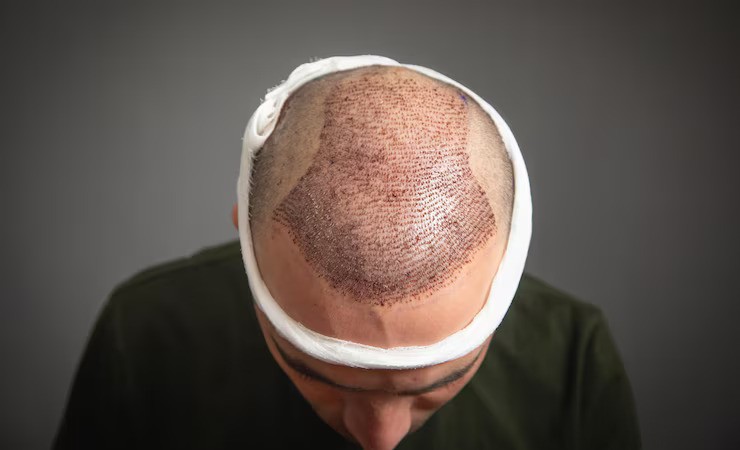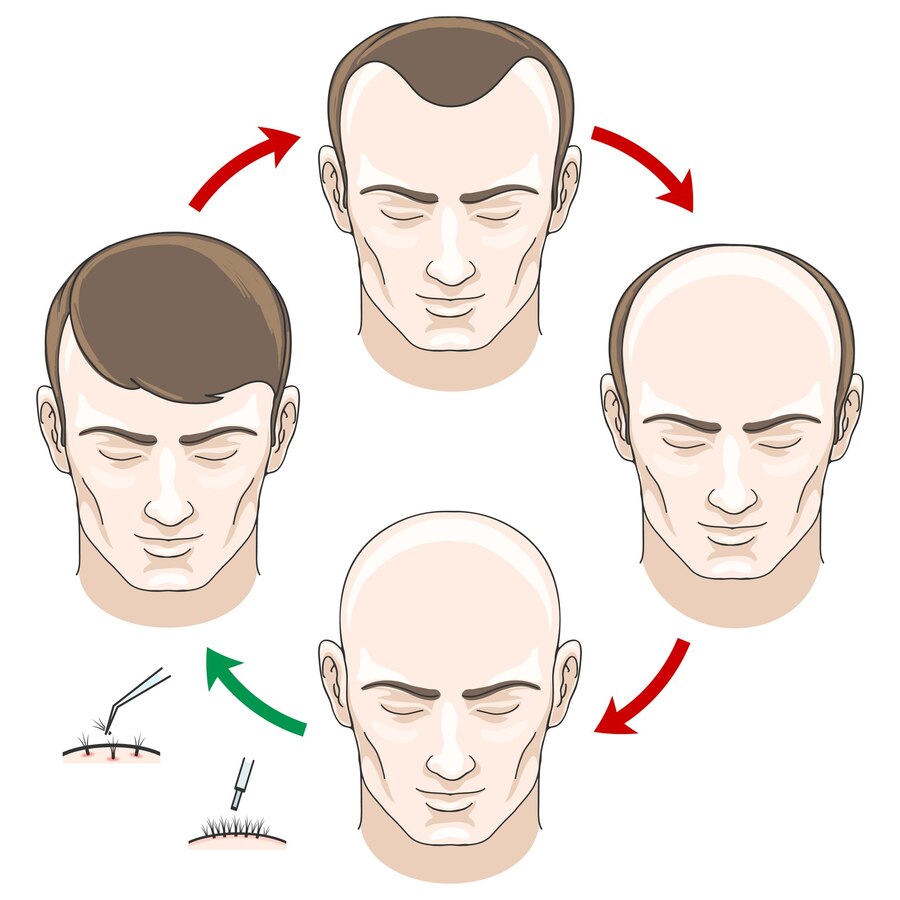Are you tired of watching your hair thin out or recede? You’re not alone. Many people experience hair loss, and the quest for effective treatments can feel overwhelming. Among the various options available today, PRP hair treatment has gained considerable attention as a promising solution. But is PRP for hair loss worth the cost? In this blog post, we’ll delve into what PRP involves and how it works to stimulate hair regrowth for men and women. We’ll also explore its benefits and risks while breaking down the costs involved. Additionally, if you’re seeking alternatives to address those pesky bald patches or thinning locks, we’ve got you covered as well! Let’s dive in and see if this revolutionary approach might be just what you need to reclaim that luscious mane you’ve been dreaming of.
What is PRP Hair Treatment?
PRP hair treatment is a cutting-edge procedure designed to combat hair loss. It utilises your own blood, making it a natural option for those seeking male hair loss treatment or female hair loss treatment.
The process begins with a simple blood draw. A healthcare professional then processes the blood in a centrifuge to separate the platelets from other components. These platelets are rich in growth factors that can stimulate hair follicles.
Once prepared, the concentrated PRP solution is injected into areas of the scalp experiencing thinning or balding. This targeted delivery aims to encourage new hair regrowth for men and women while strengthening existing strands.
Unlike traditional hair loss treatments for men or women, PRP offers minimal downtime and leverages your body’s natural healing capabilities. It’s gaining traction among both men and women seeking practical solutions for male pattern baldness and female hair thinning alike.
How Does PRP Hair Treatment Work?
PRP for hair loss utilises your body’s own healing powers. The process begins with drawing a small amount of blood. This blood is then placed in a centrifuge, which spins rapidly to separate the components.
What you get from this is platelet-rich plasma (PRP). Platelets are rich in growth factors that stimulate cellular repair and regeneration.
Once prepared, PRP is injected into the scalp at areas experiencing thinning or hair loss. These injections can awaken dormant hair follicles and promote new hair growth.
Patients often notice an increase in thickness and an improvement in the overall health of their existing hair. It’s a natural approach that avoids invasive surgeries or chemical treatments, making it appealing for many seeking hair loss treatment in the UK.
The Benefits and Potential Risks of PRP Hair Treatment
PRP hair treatment offers several benefits that attract individuals seeking solutions for hair loss in London and beyond. One significant advantage is its natural approach, using the patient’s own blood to stimulate hair follicles. This reduces the risk of allergic reactions and other complications.
Many users report noticeable improvements in hair thickness and density after consistent treatments. The procedure can also promote faster healing and rejuvenation in treated areas.
However, it’s essential to consider potential risks as well. Some patients experience mild discomfort or swelling at injection sites. In rare cases, an infection or uneven results may occur.
Long-term efficacy remains a topic of debate among hair loss specialist. While many see positive outcomes, others may find minimal change over time. Consulting a hair loss clinic in London or any trusted hair loss specialist in the UK can help determine if PRP is the right choice.
Understanding the Cost of PRP Hair Treatment
PRP for hair loss, while gaining popularity for its effectiveness in combating hair loss, does come with a price tag that varies significantly. On average, each session can range depending on factors like location and the expertise of the clinic.
Many hair loss clinics in the UK recommend multiple sessions for optimal results. This means costs can add up quickly over time. It’s essential to factor in these ongoing expenses when considering PRP as a viable option.
Insurance typically doesn’t cover this procedure since it’s often classified as cosmetic rather than medical. Therefore, budgeting is crucial before making any commitments.
When weighing the cost against potential benefits, such as improved hair density and regrowth, it’s wise to assess one’s personal financial situation carefully. Understanding all aspects of pricing will help you make an informed decision about investing in your hair loss treatment in London or elsewhere in the UK.
Alternatives to PRP Hair Treatment
If PRP hair treatment isn’t for you, there are several alternatives worth exploring:
- Minoxidil: A popular topical solution for hair regrowth for men and women.
- Finasteride: An oral male hair loss treatment option that blocks the hormone responsible for thinning.
- Hair transplants Are Offered at many hair loss clinics in London, providing a permanent solution.
- Laser therapy: Non-invasive and suitable for both men and women.
- Natural remedies, such as essential oils and supplements, may support female hair loss treatment
Exploring these options with a trusted hair loss specialist in London or a reputable hair loss clinic in the UK can help you find the right approach.
Conclusion
PRP hair treatment (Platelet-Rich Plasma therapy) has garnered attention as one of the best hair loss treatments in the UK. For many experiencing thinning hair or bald spots, it offers hope through its natural ability to rejuvenate dormant follicles.
While some achieve remarkable results in terms of thickness and fullness, others may see only minimal changes. Costs, which are typically not covered by insurance, are an essential factor to consider.
If you’re exploring advanced options, Want Hair Ltd, a leading hair loss clinic in London, specialises in tailored solutions for both hair loss treatment for men and hair loss treatment for women. Their team of experienced hair loss specialists ensures that each treatment plan—whether PRP, transplants, or other therapies—meets individual needs.
Your decision about whether PRP for hair loss is worth it ultimately comes down to your goals, budget, and expectations. For many, it’s a worthwhile investment in confidence and style.

